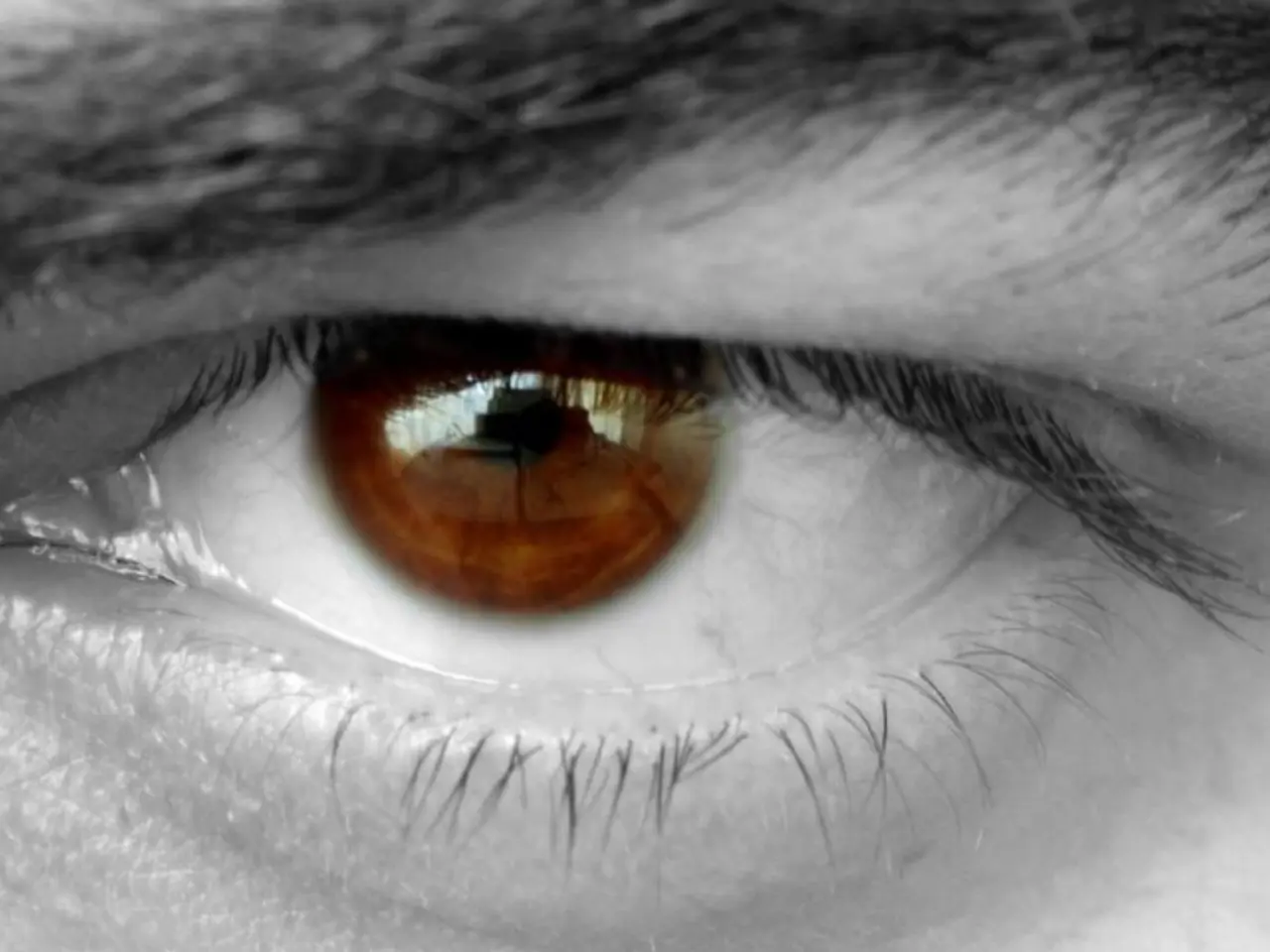Understanding the variance between pink eye (conjunctivitis) and dry eye (keratitis sicca)
Two common eye conditions that often confuse individuals are pink eye (conjunctivitis) and dry eye. Although they share some symptoms, their causes, treatments, and characteristics differ significantly.
Pink Eye (Conjunctivitis)
Pink eye is a condition that causes an infection or swelling of the conjunctiva, the thin layer of tissue lining the eyelid and the white part of the eye. It is characterized by redness or pinkness, itching, and the production of a discharge of pus or mucus.
The treatment for pink eye depends on its cause. For viral conjunctivitis, there is no specific antiviral medication. Treatment focuses on symptom relief using cold compresses, artificial tears, and strict hygiene to prevent spread. It usually resolves in 7–14 days on its own [1][3].
For bacterial conjunctivitis, antibiotic eye drops or ointments are prescribed to eliminate the infection, along with lid cleaning and avoiding contact lenses until cleared. Improvement is often quick with antibiotics [1][3][5]. Allergic conjunctivitis is managed with antihistamine or mast cell stabilizer eye drops, cold compresses, allergen avoidance, and sometimes air filters. Artificial tears can also soothe irritation [1][2][4].
In cases of irritant conjunctivitis, flushing the eyes with clean water or saline and removing the irritant can provide relief, while lubricating drops can relieve dryness and irritation [1].
Dry Eye
Dry eye occurs when a person's tear glands are not producing sufficient tears to coat and lubricate the eye, or when the tears evaporate too quickly. Symptoms include a stinging or burning sensation, tired eyes, and a feeling of having grit or sand in the eye.
The treatment for dry eye focuses on improving lubrication and tear film stability. This includes the use of preservative-free artificial tears or lubricating eye drops regularly, applying warm compresses to stimulate oil gland function, and making lifestyle modifications such as reducing screen time, blinking more often, using humidifiers, and protecting eyes from wind and pollution [2].
For more severe cases, a doctor may prescribe medications like cyclosporine or lifitegrast. In some instances, managing underlying inflammation with prescribed medications may be necessary [4].
Key Distinctions
| Aspect | Pink Eye | Dry Eye | |-------------------------------|--------------------------------------|----------------------------------------------| | Cause | Viral, bacterial, allergic, irritant | Tear deficiency or evaporation, inflammation | | Main Treatment | Antibiotics (bacterial), antihistamines (allergic), cold compresses, hygiene | Artificial tears, warm compresses, blink exercises | | Infectious? | Often contagious (viral, bacterial) | Not infectious | | Discharge Type | Thick, colored (bacterial); watery (viral) | Minimal, stringy or no discharge | | Symptom Duration | Usually days to two weeks | Often chronic, fluctuating symptoms |
Proper diagnosis is crucial as treatments for pink eye and dry eye differ markedly [1][2][3][4][5]. Over-the-counter (OTC) eye drops such as artificial tears or moisturizing gels and ointments can provide relief from dry eye symptoms.
It is essential to seek medical care if experiencing reduced vision, pain in the eye, eye swelling or tenderness worsens, fever, symptoms occur after scratching the surface of the eye, or any other concerning symptoms related to your eyes.
For individuals with pink eye, it is important to wash hands regularly and avoid touching their eyes to prevent spreading the infection to others.
In the case of a severe case of dry eye, it can increase the likelihood of developing pink eye.
[1] Mayo Clinic. (2021). Conjunctivitis (pink eye). https://www.mayoclinic.org/diseases-conditions/conjunctivitis/symptoms-causes/syc-20352741
[2] American Academy of Ophthalmology. (2021). Dry eye. https://www.aao.org/eye-health/diseases/dry-eye-syndrome-prevalence-risk-factors-and-prevention
[3] National Health Service (UK). (2021). Conjunctivitis (pink eye). https://www.nhs.uk/conditions/conjunctivitis/
[4] American Optometric Association. (2021). Dry eye syndrome. https://www.aoa.org/healthy-eyes/diseases-conditions/dry-eye-syndrome
[5] Centers for Disease Control and Prevention. (2021). Conjunctivitis (Pink Eye). https://www.cdc.gov/nczved/divisions/dfbmd/disease-listing/conjunctivitis-pink-eye.html
- In the realm of health-and-wellness, it's crucial to understand that pink eye (conjunctivitis) and dry eye are two distinct conditions, albeit they can sometimes cause similar symptoms.
- When it comes to mental-health, it's important to consider that the management of eye conditions like pink eye and dry eye requires different treatment approaches, underscoring the significance of accurate diagnosis and proper care.




